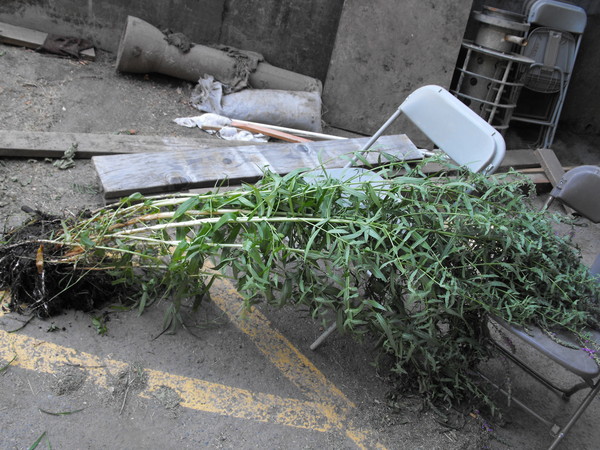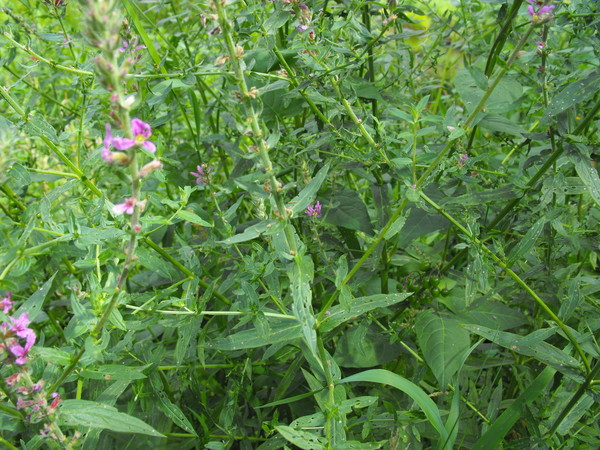After almost thirteen years of managing the canyon and generally touching every aspect of earth in those woods a new predator has been seen on the loose….
Purple loosestrife (Lythrum salicaria). A particularly aggressive critter- that can grow up to 9 feet tall. Infestations can result in a sharp decline in biological diversity- creating dense monocultures.
Quickly crowding out native species- this sort of infestation can affect the ability for waterfowl and amphibians to move around in wetlands if left unchecked.
One of these plants can produce up to three million tiny seeds annually- these seeds over winter and easily are carried by wind and water.
Fortunately for us, this plant was discovered prior to seed set. It was discovered nearest the island below the Chemistry building- keep an eye out, and report any silent invaders. Being proactive with this plant can save us a lot costly labor and help maintain species diversity.
Purple loosestrife can easily be confused with other native wetland plants such as fireweed, (Epilobium angustifolium) or Douglas spirea, (Spiraea douglasii). Look for purple loosestrife’s squarish stems, opposite leaves, and flowers, with 5 to 7 narrow petals. Fireweed and Spirea both have a rounded stem and alternate leaves.



